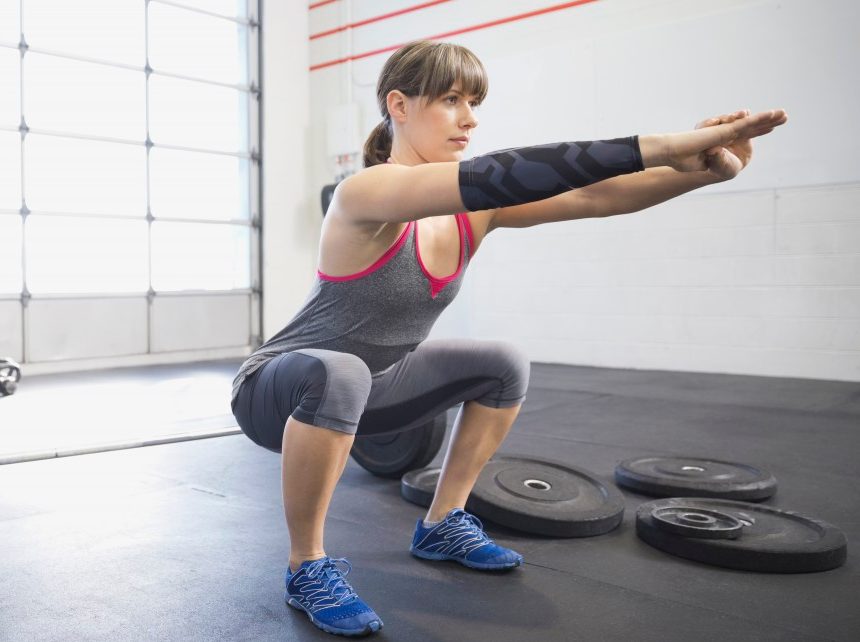How to Have Good Posture

While you look at smartphones and laptops, you’re likely to often be slouched or jutting your head forward. Here are some exercises for good posture.
“Sit up straight!” Did your mother say that to you? It’s was good advice to teach you to develop a comfortable, healthy posture. These days, when so many people squint at smartphones or type on laptops, you’re likely to slouch or jut your head forward often — a recipe for back and neck pain.
Many people also sleep in postures that strain their muscles and then wake up sore and stiffer than they need to be.
YOU MIGHT ALSO LIKE: 7 Myths About Back Pain
What does good posture look like?
To assess your standing posture, have someone take your photo. Wear form-fitting clothing and stand comfortably, with your feet spread about as far as your hips. You’ll need two photos, head to toe, one from the front and one from the side.
Look carefully at the side photo.
- Where is your ear in relation to your shoulder? Is it in front of your shoulder or about in the middle? If it juts forward, you likely have a stiff neck.
- Can you see your shoulder blade in the side photo? That suggests a rounded back, a source of back pain.
- Are your hips tilted forward, your belly sticking out, and your lower spine arched? That posture can be another source of back pain.
It may be upsetting to see that you are lopsided, but self-awareness can go a long way. You can feel much better if you learn to notice when you’ve adopted an unhealthy position and adjust. You can also do exercises that target the weak muscles that often underlie bad posture.
How to have good posture
Stiff neck
If your head is jutting forward, you are probably experiencing some neck pain, or even headaches, pain in your jaw, or sinus pain. Consider these remedies to get the benefits of good posture.
First, check out the places at which you usually work on a computer. Is the screen angled comfortably and at a height where you can see it without looking down or up? Ideally, you’ll be looking straight ahead.
Second, get your eyes checked to see if you need glasses or a new prescription. You may be stressing your neck because you can’t see well. (You may need a specific prescription just for working at your computer.)
Check with your company to see if you can get an ergonomic evaluation of your desk. The U.S. Department of Labor has a checklist that can help you and your company create a safe and comfortable workstation.
People sometimes get stiff necks because they sleep with their heads at an angle. Sleeping on your stomach is rough on your neck. Sleeping on your back may be most comfortable for you, but don’t prop your head up so that your neck is tilted all night.
When you lie on your side, be sure your neck is supported and your head is flat, not angled up or down. You want to put the pillow under your neck, not your shoulder, as many people do.
Rounded back
You need to strengthen your trapezius, the muscle that runs between your shoulders through your back.
One exercise for good posture is to lie face down with your elbows at right angles. Now raise your arms, using that back muscle without changing the angle, and squeeze your shoulders together. Hold for five seconds. Do this 12 times. Work up to two sets of 12 a day.
Tilted pelvis, arched back
Your hips are probably tight. There are many ways to loosen tight hip reflexors. In yoga classes, a classic hip-opener is the half-pigeon pose.
You can also lie on your back, put your arms under your right thigh, and bring your shin upwards, making a right angle to the floor. Place the heel of your left foot on your right thigh. You’ll feel the stretch in your left hip. Hold until your hip relaxes. Then repeat on the other side.
Sleeping on your side can hurt your hip. Many people put a pillow between their knees. You can rest your hip if you keep a firm pillow between your thighs, not your knees, so your top leg is at a right angle to the bed, not tilted down. The pillow will support your upper leg and fill in the space.
Next, examine the photo in which you face the camera. Are your shoulders even, or is one higher than the other? Are your kneecaps facing forward or tilted inward toward each other, a sign of pigeon toes? Are your toes pointing forward or out to each side at 10 degrees or more, a sign of duck feet?
You can do a variety of exercises to address each of those issues. You might ask your doctor for a referral to see a physical therapist. You can also take private lessons with a yoga teacher or a specialist in Feldenkrais techniques, to address specific muscular and movement issues.
YOU MIGHT ALSO LIKE: The Benefits of Pilates, Feldenkrais, and Alexander
Updated:
February 02, 2024
Reviewed By:
Janet O’Dell, RN